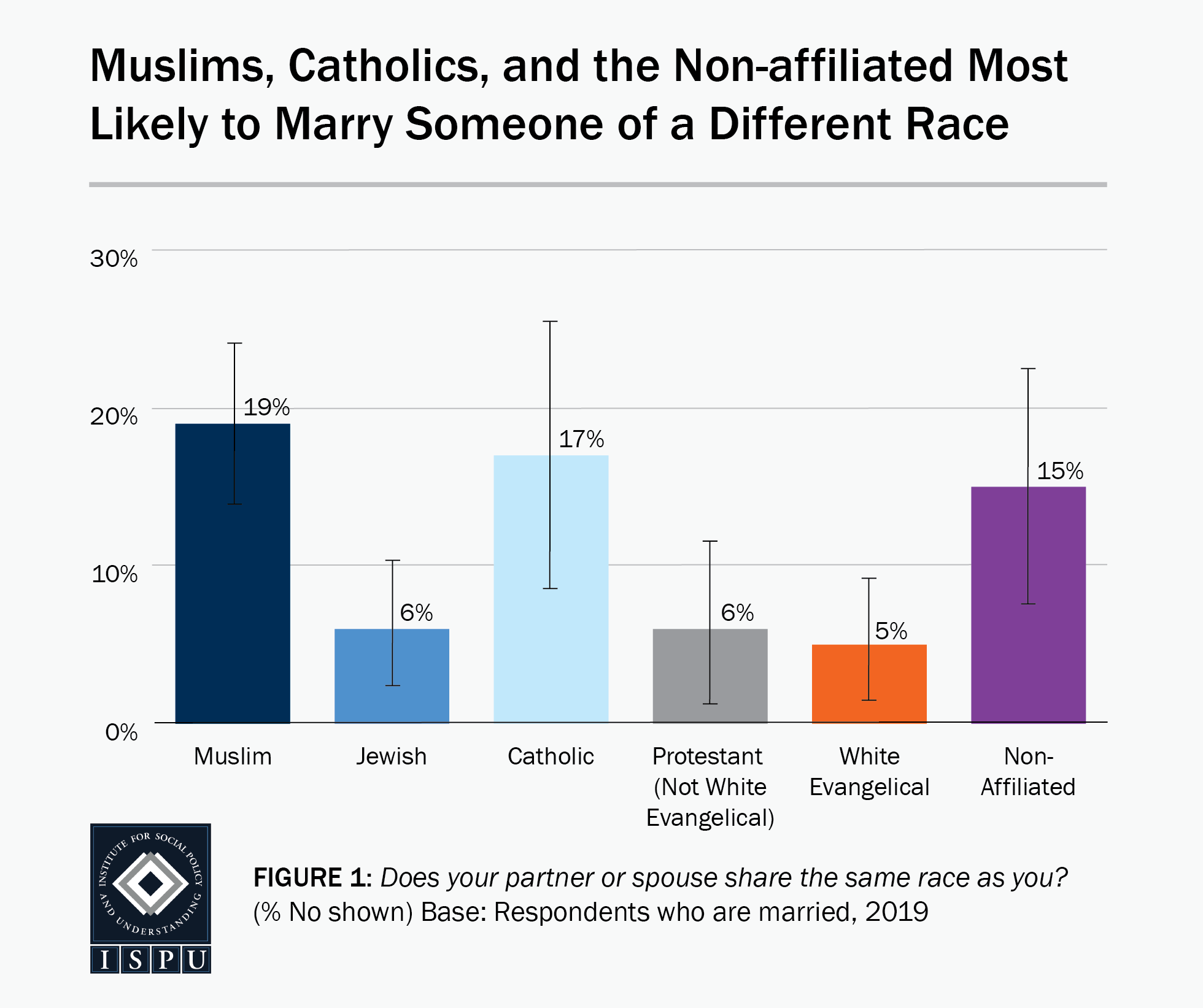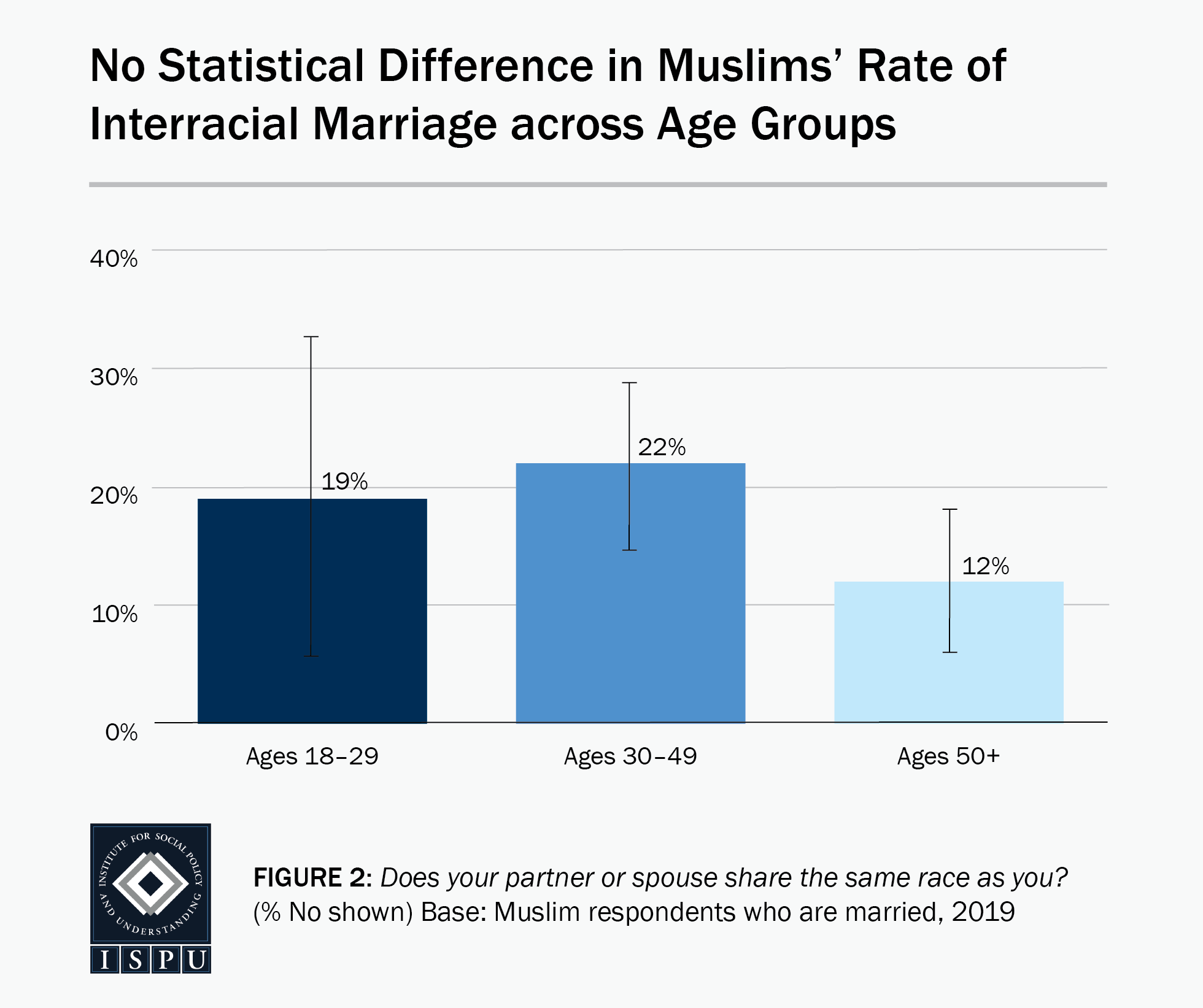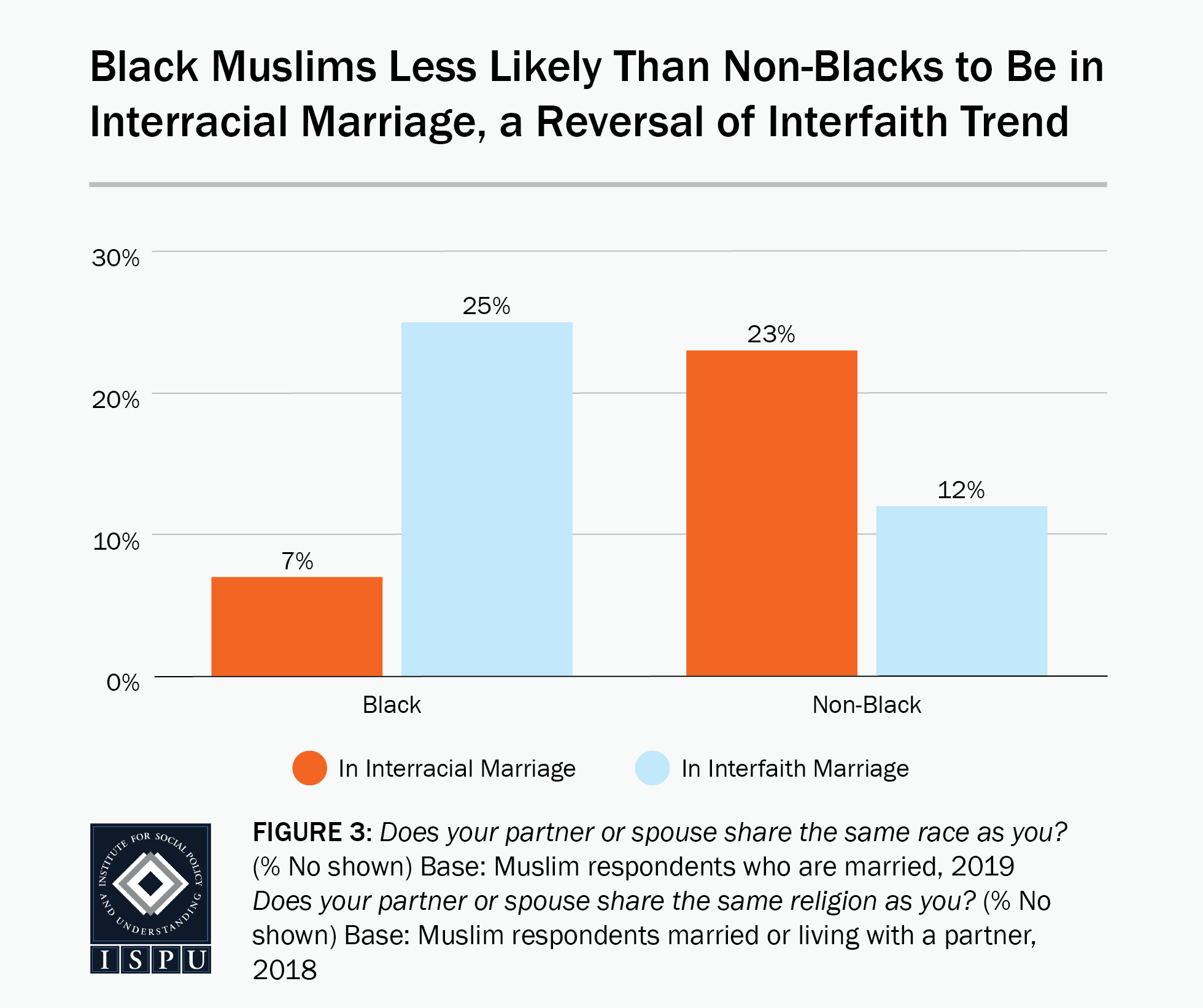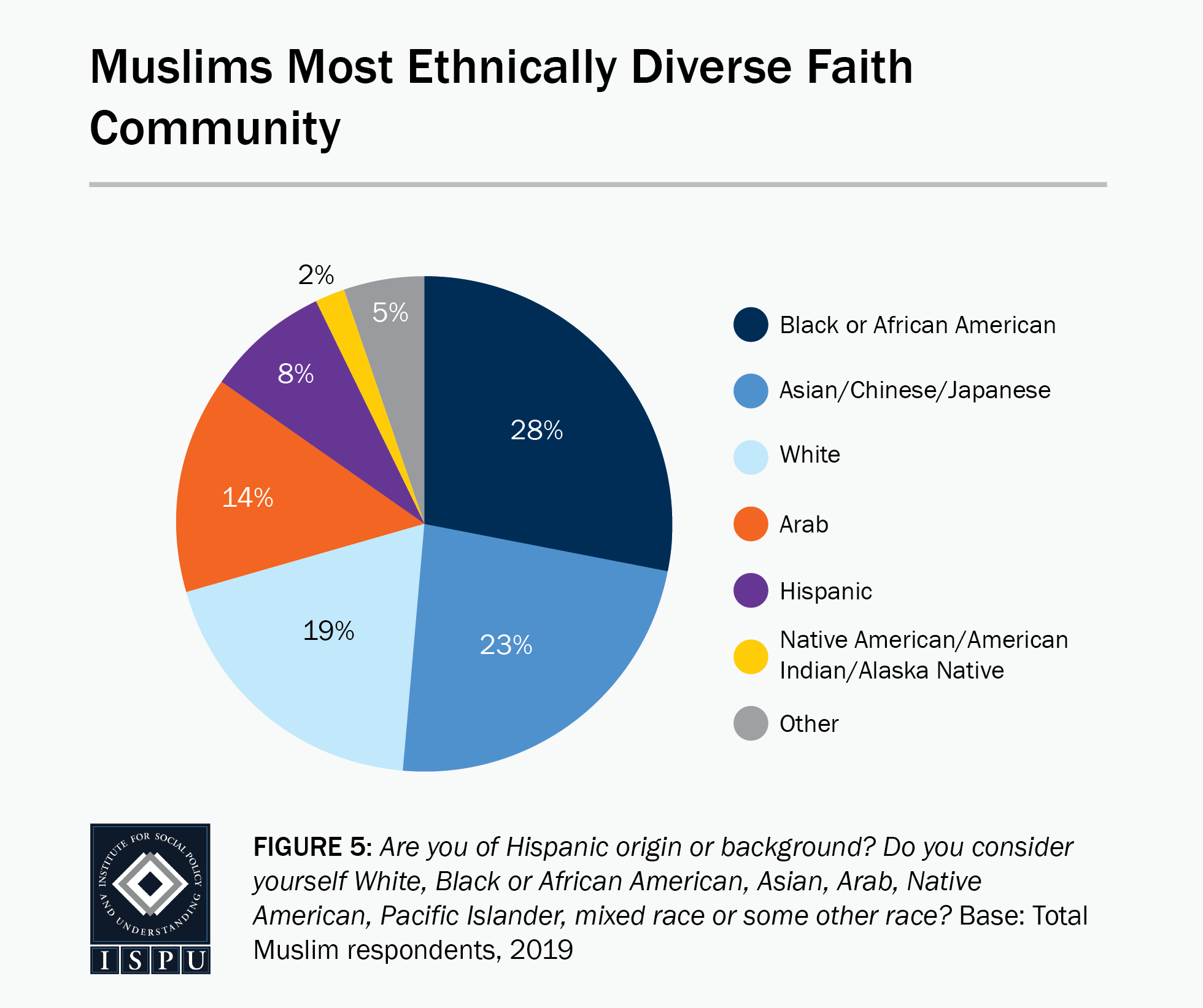
To Have and to Hold, Part Two: Interracial Marriage among American Muslims
JANUARY 22, 2020 | BY YOUSSEF CHOUHOUD
DOWNLOADS
MORE ANALYSES
Not Immune: Some Muslims in America Internalize Islamophobia
Unwanted Sexual Advances from Faith Leaders Are Equally Prevalent Across Faith Groups
Muslims Profess More Private Religious Devotion, Less Public Religious Assertiveness
The Majority of Muslims Believe Poverty Is the Result of Bad Circumstances, Not Bad Character

To Have and to Hold, Part Two: Interracial Marriage among American Muslims
JANUARY 22, 2020 | BY YOUSSEF CHOUHOUD
In the more than 50 years since the landmark ruling in Loving v. Virginia, interracial marriage has steadily increased in the United States. As is often the case with meaningful social change, this general pattern is not the same across the entire U.S. population. Pew highlights several significant differences in the rate of interracial marriage on the basis of age, race, and whether or not one lives in a metro area. One demographic category that has been comparatively absent from these empirical examinations is religion, despite the centrality of religious arguments against interracial marriage in the Loving case, in its aftermath, and even in fairly recent disputes.
Using data from the 2019 American Muslim Poll, we took a closer look at interracial marriage across faith groups and within the American Muslim community. Figure 1 demonstrates a distinct divide on the basis of religious affiliation among married individuals. On the one hand, the percentage of Jews, white Evangelicals, and Protestants who are not white Evangelicals, respectively, married to partners of a different race is in the mid-single digits. On the other hand, the percentage of interracial marriage among Muslims, Catholics, and the non-affiliated, respectively, is more than double the other groups, on average. Indeed, nearly 1 in 5 Muslims report being married to someone with a racial background that differs from their own.
Focusing in on Muslims, we find a number of ways in which the community’s demographic breakdown aligns with and diverges from trends in interracial marriage among the broader public. Figure 2, for example, shows that there is initially a mild uptick in rates of interracial marriage among Muslims ages 30–49 compared with those ages 18–29, which is followed by a noticeable (if statistically insignificant) drop-off among Muslims ages 50 and older. This pattern is roughly in line with what we observe in the general public.
Yet, when it comes to the racial breakdown of interracial marriage, Muslims take a marked detour from societal trends. Specifically, Black Muslims are less likely to racially intermarry than their Black counterparts in the general public (see Figure 3), with the latter trending dramatically upward in recent years. Notably, too, the pattern among Black Muslims when it comes to interracial marriage inverts the one we noted in last year’s piece on interfaith marriage. Whereas Black Muslims are about one-third as likely as non-Black Muslims to marry someone of a different race, they are twice as likely as their non-Black faith counterparts to marry someone of a different faith.
Another notable demographic discrepancy exists between men’s and women’s rates of interracial marriage. Figure 4 shows that women are about 9 percentage points more likely than men to marry someone of a different race, although this finding is not statistically significant. In the general public, only among Asian Americans are women more likely than men to marry someone of a different racial background. This gender gap once again inverts the trend we witnessed last year in our analysis of interfaith marriage, when we observed that Muslim women were only about half as likely as men to wed someone outside their faith.
It remains an open question whether interracial marriage is associated with a narrowing of social distance between Muslims and the broader society, a phenomenon commonly referred to as “integration” or “assimilation.” To be sure, recent scholarship has cast doubt on the link between intermarriage and assimilative attitudes. Regardless, the patterns we observe in our data underscore a quintessentially American Muslim experience—reflecting, as they do, the community’s unmatched racial diversity (Figure 5) relative to any other country’s Muslim population. This demographic reality will doubtless affect whatever form “American Islam” takes in the years to come.

Youssef Chouhoud is an assistant professor of political science at Christopher Newport University, where he is affiliated with the Reiff Center for Human Rights and Conflict Resolution. He is an ISPU Scholar, the co-author of ISPU’s 2017 and 2018 American Muslim Polls, and the data analyst of the 2019 American Muslim Poll. Learn more about Youssef→






